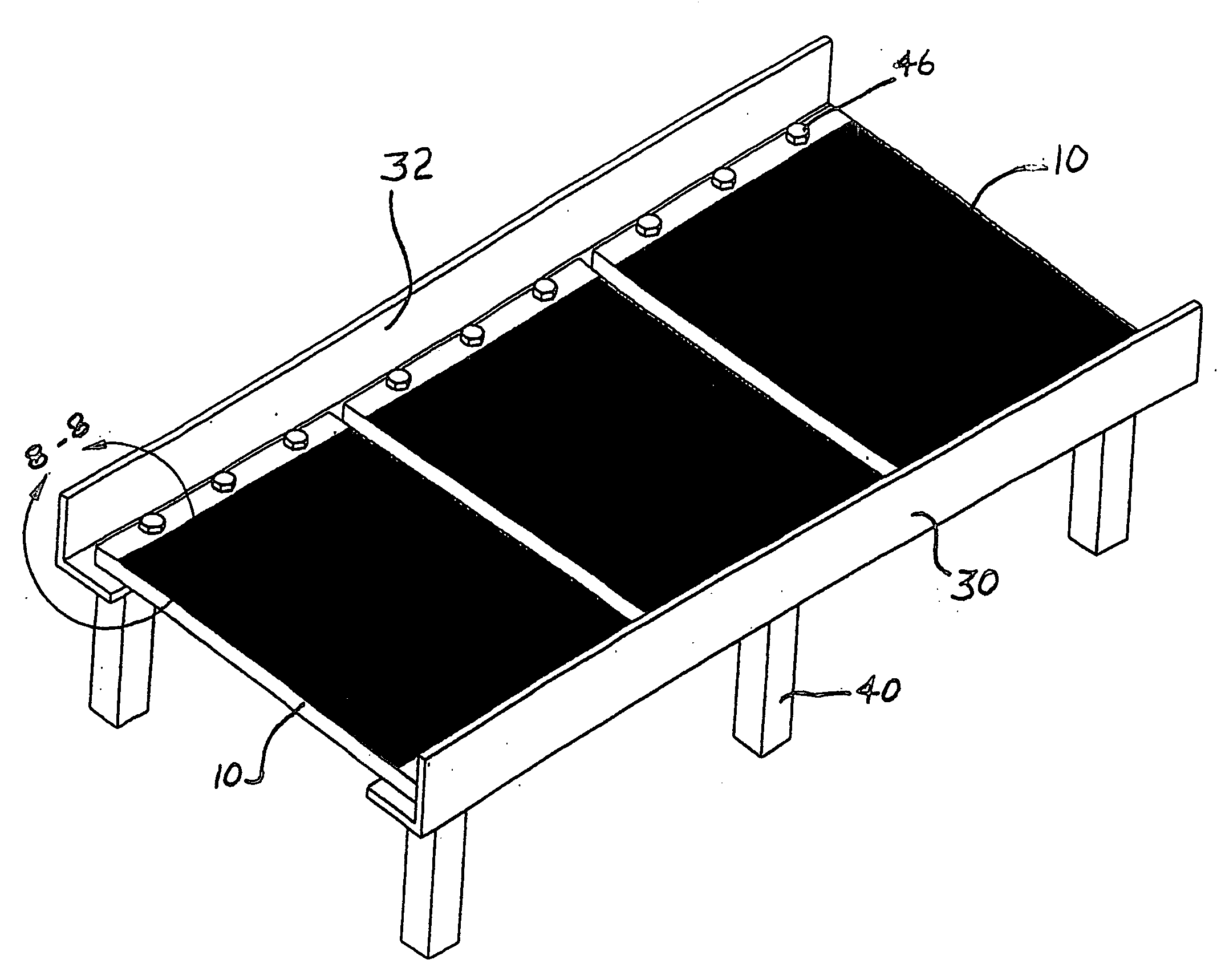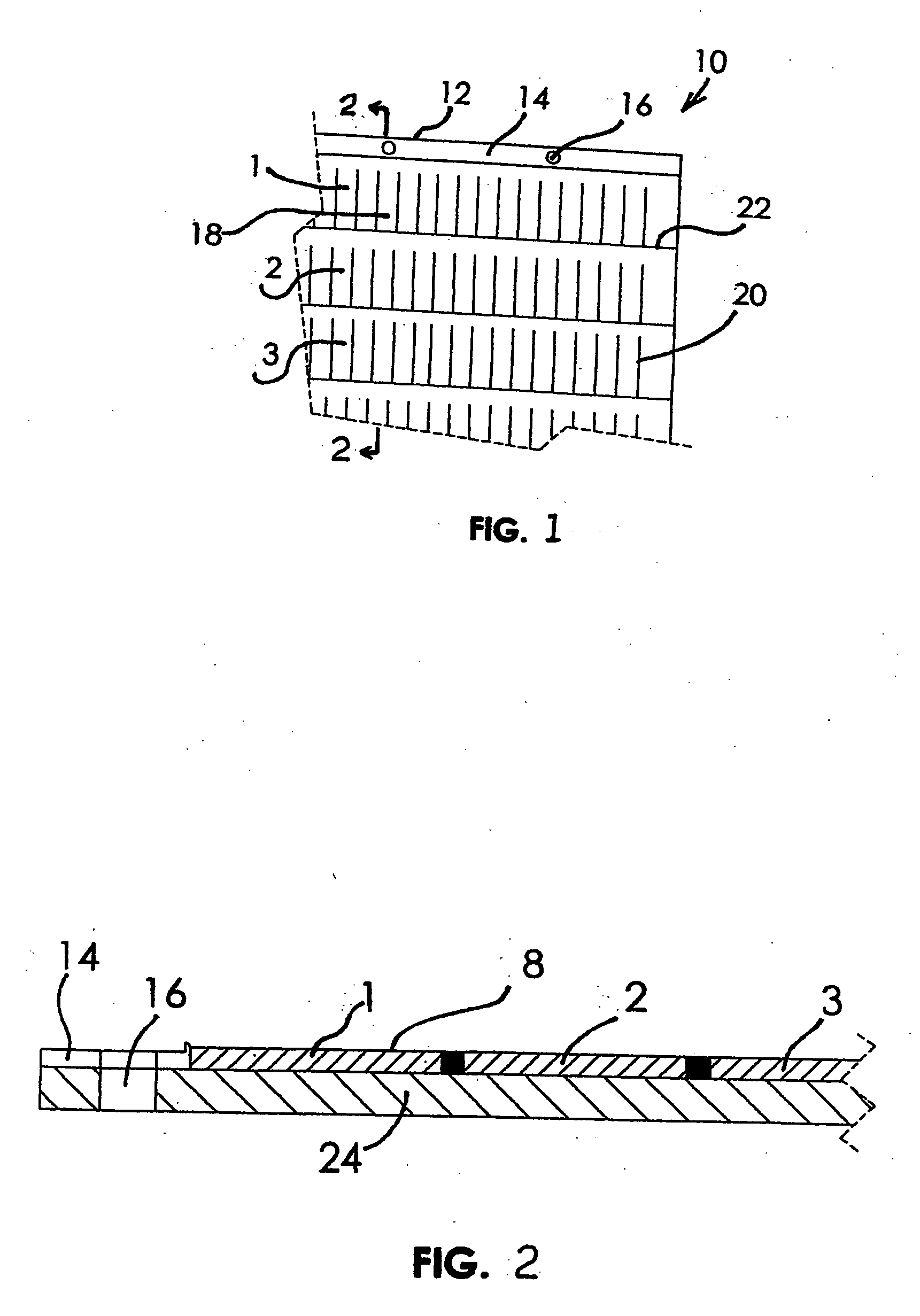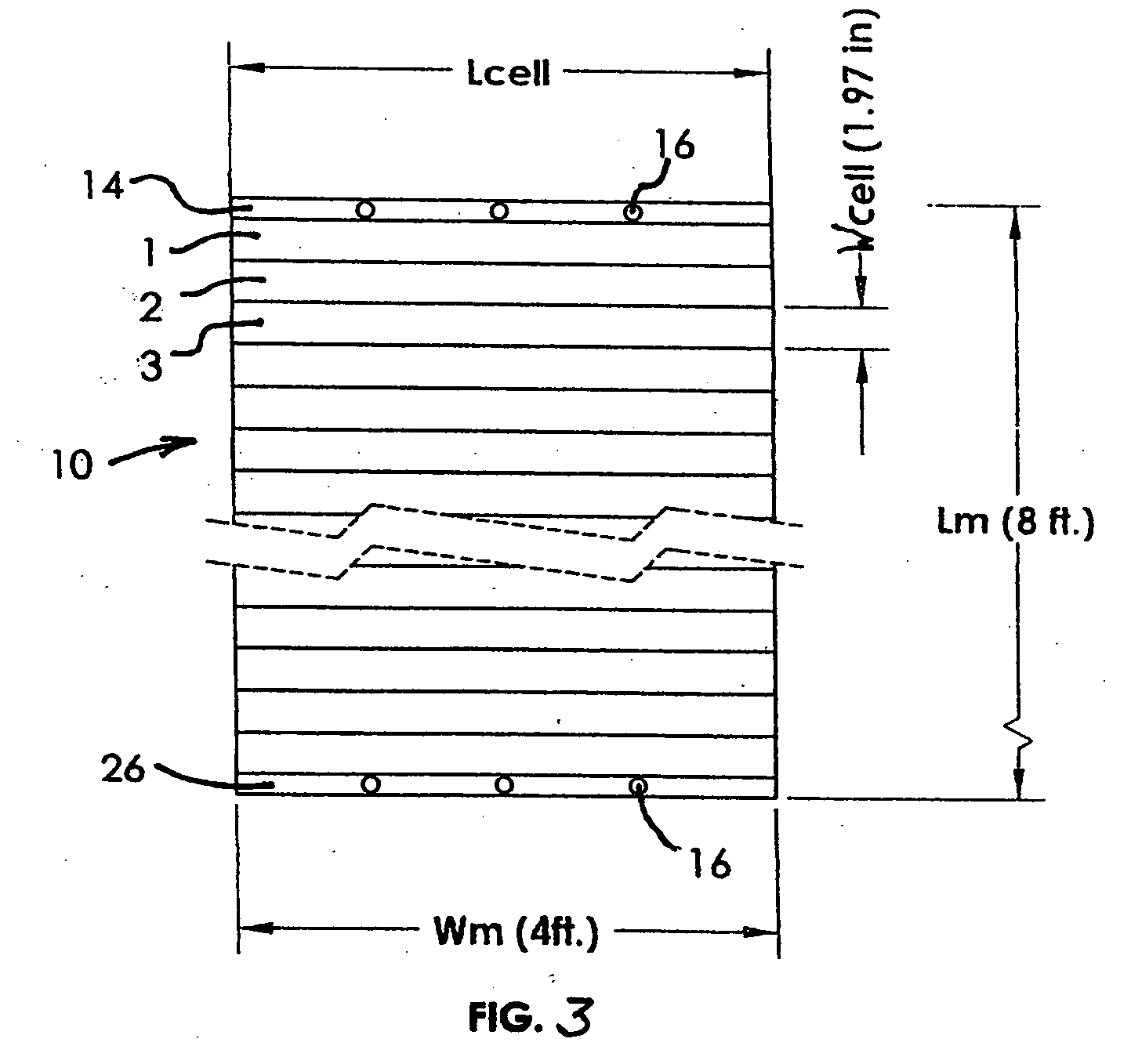Photovoltaic power farm structure and installation
a photovoltaic power farm and power plant technology, applied in photovoltaic supports, pv power plants, sustainable buildings, etc., can solve the problems of increasing the cost of individual modules, limiting the practical size of individual modules, and high material and manufacturing costs of individual crystalline silicon modules, etc., to achieve the effect of being easily replaced
- Summary
- Abstract
- Description
- Claims
- Application Information
AI Technical Summary
Benefits of technology
Problems solved by technology
Method used
Image
Examples
example 1
[0095]Modules of multiple interconnected cells comprising thin film CIGS supported by a metal foil are produced. Individual multi-cell modules are constructed according to the teachings of the Luch patent application Ser. No. 11 / 980,010. As noted, other methods of module construction may be chosen. Each individual cell has linear dimension of width 1.97 inches and length 48 inches (4 ft.). 48 of these cells are combined in series extending approximately 94.5 inches in the module length direction perpendicular to the 48 inch length of the cells. Such a modular assembly of cells is expected to produce electrical components of approximately 24 open circuit volts and 15 short circuit amperes. A terminal bar is included to contact the bottom electrode of the cell at one end of the 8 ft. module length. A second terminal bar is included to contact the top electrode of the cell at the opposite end of the 8 ft. length. The terminal bars are readily included according to the teachings of the ...
example 2
[0101]In this example, site preparation is generally similar to that of Example 1 and structures are constructed according to the embodiment of FIG. 16. Modules are manufactured and shipped to the installation site in the form of rolls of extended length. For example, a continuous roll of CIGS cells interconnected in series to form a single module is produced. Individual cells have a width dimension of 1.97 inches and length of 48 inches. The module is 100 ft. in length and has terminal bars at each end of the 100 ft. length. There are 608 series connected cells and the terminal bars are about 1 inch wide and extend across substantially the entire 48 inch width of the module. The modules are accumulated in rolls each of which comprises a 100 ft. module as described.
[0102]The rolls are shipped to the installation site. There, workers position one end at the start of an extended channel such as depicted in FIG. 16. Such a 100 ft. roll of thin film module on a 0.001 inch metal foil sub...
PUM
 Login to View More
Login to View More Abstract
Description
Claims
Application Information
 Login to View More
Login to View More - R&D
- Intellectual Property
- Life Sciences
- Materials
- Tech Scout
- Unparalleled Data Quality
- Higher Quality Content
- 60% Fewer Hallucinations
Browse by: Latest US Patents, China's latest patents, Technical Efficacy Thesaurus, Application Domain, Technology Topic, Popular Technical Reports.
© 2025 PatSnap. All rights reserved.Legal|Privacy policy|Modern Slavery Act Transparency Statement|Sitemap|About US| Contact US: help@patsnap.com



